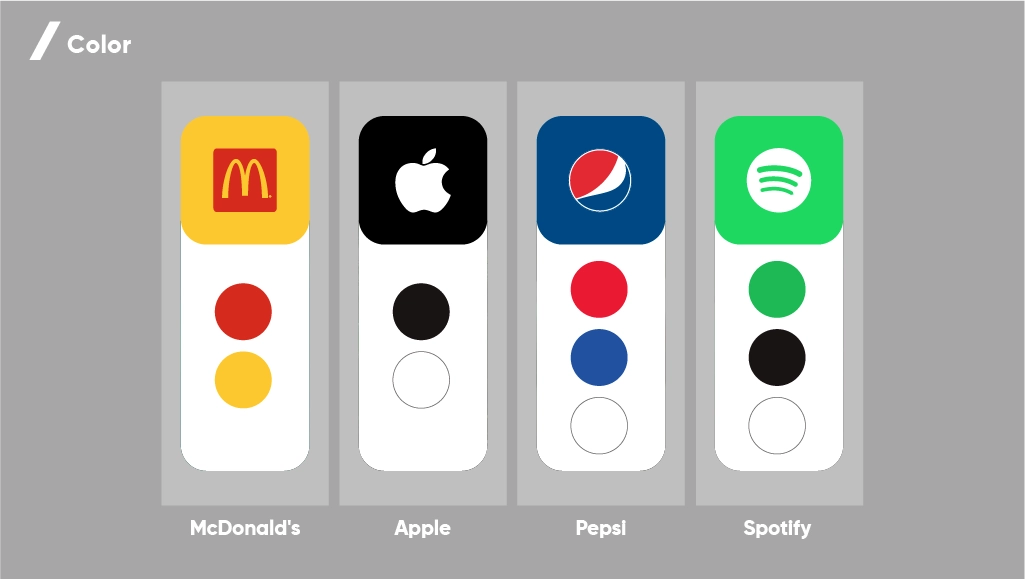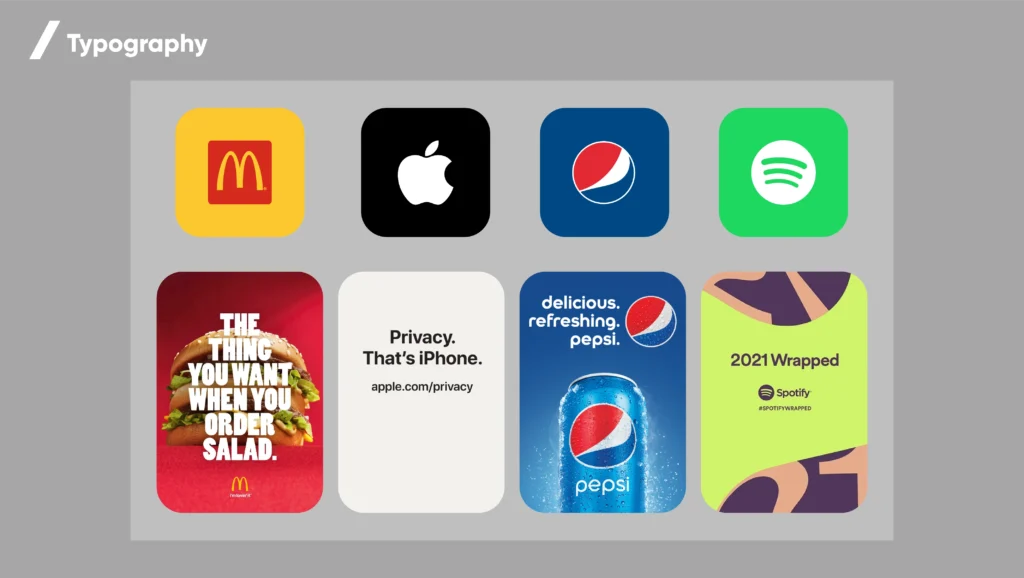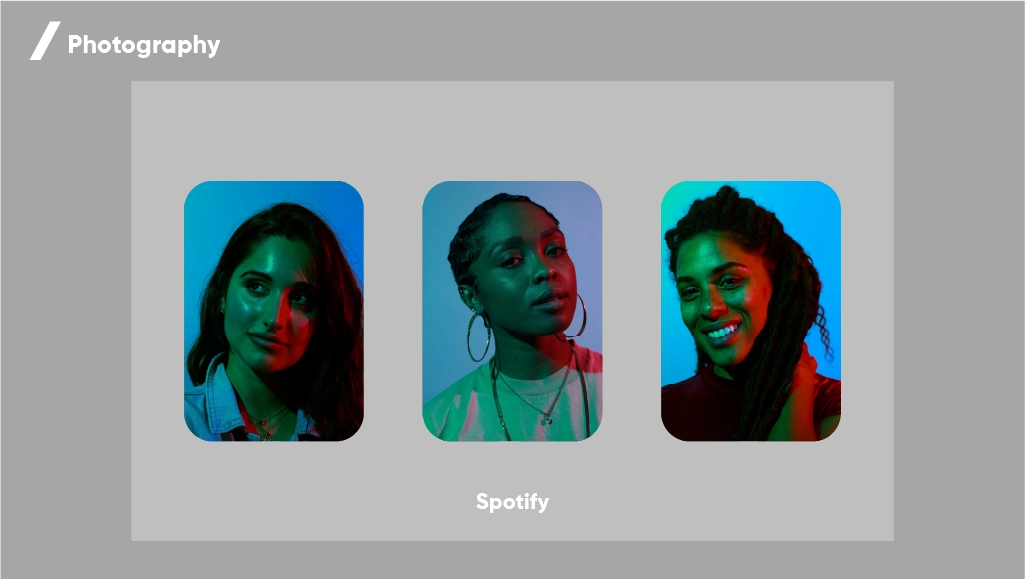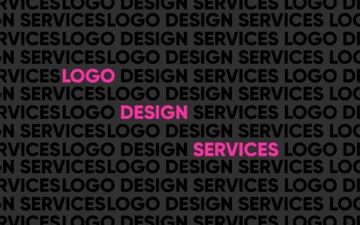In today’s digitalized world, a strong visual identity is essential for any brand to stand out and make a lasting impression. Whether you are a start-up aiming to carve your niche or a growing business looking to have an edge over your competitors, the process of visual identity design is both artistic and strategic. Visual identity design is the process of careful planning to create and impress a target audience. To create a visual identity that impresses the world, you must know what a visual identity is, why it is important, and what its components are. Follow this article to grasp everything about visual identity design.
What is visual identity design?
Visual identity design refers to the design of all physical elements that make a brand identifiable. It encapsulates every visible component such as the logo, colors, typography, iconography, patterns, and images. All these elements craft an exterior image that can be seen by the eye and are the first to be recalled when thinking about the brand.
What is the difference between visual identity and brand identity?
Visual identity is not the same as brand identity; it is a subset of brand identity and deals only with the visual aesthetic of a brand. On the other hand, brand identity is a holistic identity designed to create your brand. In addition to visual elements, brand identity design includes brand story, voice, personality, name, and verbal identity.
Why is a visual identity important to your business?
A visual identity is the visual aspect of branding and involves a visual representation of a brand, its personality, and its values. A visual identity is crucial for any business that aims to make a name in the vast industry. It determines how a brand is perceived and recognized by its audience. Additionally, it provides the materials necessary for effective marketing campaigns. When done right and consistently, visual identity design can touch upon a business’s professionalism, build its brand personality, and expand its visual appearance. You should think of having a consistent visual identity before you find yourself recognized by attached attributions.
What elements are designed in visual identity design?
Logo
Many people mistake a logo for visual identity. This is reasonable to some extent since a logo is what most people remember a brand for. A logo is the foundation of visual identity design and sets the stage for other components. It is a compact visual element that includes in itself the brand’s message, colors, structure, and values.

Color palette
A color palette is the essence of a distinctive visual identity. It is a group of colors your brand uses across various platforms. Without colors, you cannot be visible or impressive. Think of red and blue meeting the web pattern, what else can you think of? Spiderman right? Red and blue might remind you of Pepsi at first. However, when we bring in the pattern, you identify the Marvel Comics’ brand mascot, Spiderman. And, this is what we call the power of a strong visual identity! You can contact Abron Studio for exclusive offers if you want to make a visual identity as strong as this one.
Your color palette should include:
Primary or dominant colors (usually one)
Secondary or accent colors
Neutral colors

Typography
The font or typeface creates the aesthetic behind visual communication. Like how you chat with others, an identity lies behind the way you type. Similarly, your brand should adopt an individual set of fonts that makes it easy to distinguish you even when your brand name is invisible. Typography is not just to convey the emotional side of your identity; it tells your brand story in every touchpoint it appears.

Graphical Elements
A visual identity is not concluded in a logo, color palette, or typeface. Other graphic devices like patterns and iconography are necessary to achieve a consistent look. Every graphical element adds character to the constructed image and makes it distinctive through regular usage. Altogether, these graphical elements can characterize the brand identity, resulting in a perfect consolidation.

Photography
This design element refers to a brand’s use of illustrations, photographs, and other imagery to communicate its message. The photography utilized for a brand’s appearance must be in line with its personality. Rather than adding a layer of complexity, the brand images should simplify visual communication. They should follow the brand’s core values and feature brand colors.

A Collection of Our Visual Identity Design
We have a massive collection of projects for which we tried to do the best visual identity design. Curated for this blog post, you can find our two recent projects FLYAWAY and SmartDVM in full view. Take a look at these visual identities and note which aspects you would like us to bring to your visual identity design. If you have specific questions, send them to hi@abron.co.
“FLYAWAY”
Target Identity: Swift, artistic, digital.
Visual identity design elements: A monogram logo, a dynamic cyberpunk color palette, a stationery set, stickers, badges, backpacks, T-shirts, social media templates, and staff ID cards.

“SmartDVM”
Target Identity: Friendly and caring.
Visual identity design elements: A monogram logo, a pastel color palette, typography, a pattern, a calendar, a stationery set, 3D characters, tote bags, mugs, posters, stickers, T-shirts, and pet bowls.

Choose Abron Studio for the perfect visual identity design
By reading this article, you now know how the right visual identity affects your brand recognition. If you need more information about what is included in our visual identity design packages or would like to know the costs and timeline, message us directly at hi@abron.co. Beware that as soon as you message, our team members will read your inquiries closely and contact you in hours or sooner.






